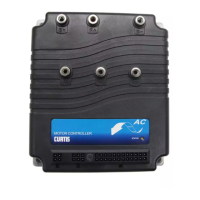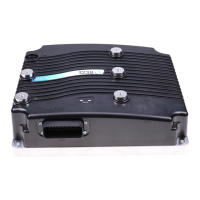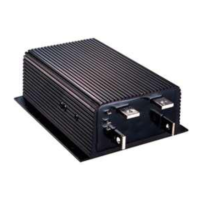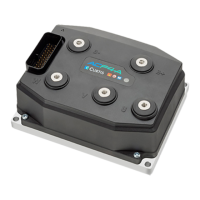Curtis 1243GEN2 Manual
26
If the interlock switch opens while the vehicle is being driven, the controller uses the
motor to apply regenerative braking as soon as the programmed Sequencing Delay (see
page 42) expires. This braking—which is called interlock braking—greatly reduces
wear on the electromagnetic brake and also enables the vehicle to meet more stringent
stopping distance requirements.
As soon as interlock braking brings the motor speed to approximately zero, the
electromagnetic brake is applied. Note that for safety, the EM brake will engage after
the programmed Interlock Brake Delay (see page 28) even if interlock braking does
not bring the motor speed close to zero.
The seven Interlock Braking parameters affect the regen braking that results
when the interlock switch is opened while the vehicle is being driven.
INT BRAKE RATE
The interlock braking rate defines the time it takes the controller to increase
from 0% to 100% braking output (as determined by the max regen current
setpoints) when interlock braking is initiated. The interlock braking rate is
adjustable from 0.1 to 3.0 seconds.
MAX FWD REGEN
The maximum forward regen parameter defines the maximum regenerative
current at
maximum load while traveling in the forward direction. The max
forward regen current is adjustable from 100 amps up to the controller’s full
rated current.
If a load sensor is not used, this will be the single maximum regen current
in the forward direction.
MAX REV REGEN
The maximum reverse regen parameter defines the maximum regenerative
current at maximum load while traveling in the reverse direction. The max
reverse regen current is adjustable from 100 amps up to the controller’s full rated
current.
If a load sensor is not used, this will be the single maximum regen current
in the reverse direction.
3 — PROGRAMMABLE PARAMETERS:
Interlock Braking Parameters
Interlock Braking Parameters
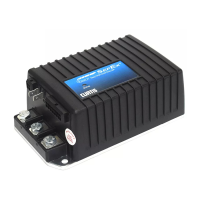
